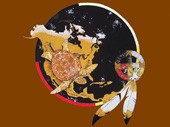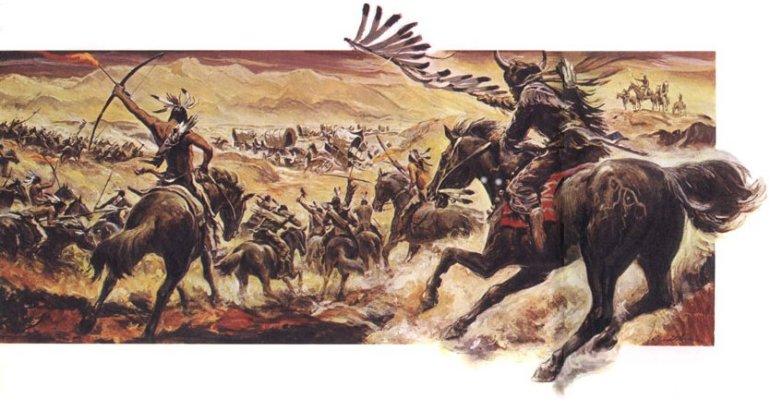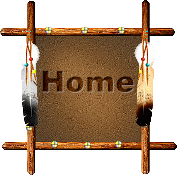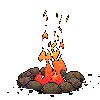
NDN Support North America
coloured.jpg)
The Indian Wars ain't over yet
by
Theo van Rossum
Most of us have been brought up with a stereotypical image of the 19th century Indian Wars, the way it has always been portrayed by Hollywood: an overwhelming amount of howling Indians, cavalry trumpets,

A classical image of the 19th century Indian Wars
scalping (by Indians only), white people putting their wagons in a circle. stoic Indian scouts betraying their own, a young handsome and heroic soldier protecting a damsel in distress... and most of it didn't even happen that way. Nobody ever put their wagons in a circle and no way that Indians would be exhausting their valuable horses by galloping around these wagons. Same like the gun fights. Not many people could afford bullets and you wouldn't be wasting them on duels if you need them in case you came across a rattle snake one day. I'm not going to ponder on who invented the scalping or who started that practice. They may have been a war trophee to Indians at the time but knowing that white people put financial bounties on scalps and how materialistic they were, it is not hard to imagine that white people scalped a whole lot more than the Indians ever did, but that didn't really fit into the Hollywood propaganda machine. Same as the photographs of the railroad workers only showed white people while in fact way more Chinese people worked on it, but they were just not allowed to pose for the pictures. But okay, this topic was not supposed to be about stereotypings now. Surely the Wounded Knee Massacre was the very last of the Indian Wars (if we can still call that a war the way it happened) but it was never the end to any clashes between Indians and the US. Not all of these clashes have been violent as other more political disputes can also be classed under it as far as I'm concerned.

back to articles

1
This article in other languages